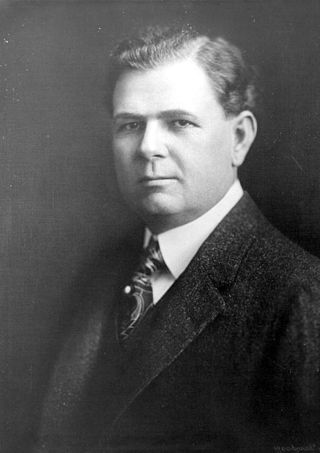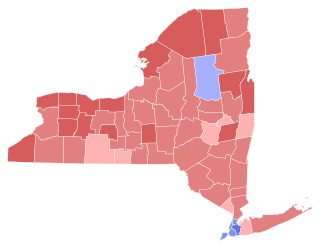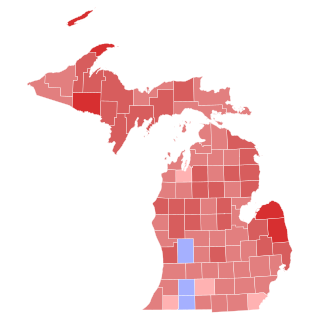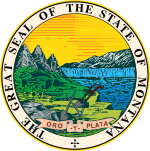
Park Monroe Trammell, was an American attorney and politician from the state of Florida. Trammell represented Florida in the United States Senate from 1917 until his death in 1936. As chair of the Senate Naval Affairs Committee, Trammell was essential in the creation of several laws that revitalized the United States Navy. Trammell previously served as the Governor of Florida and Florida Attorney General.

The 1952 United States Senate elections was an election for the United States Senate which coincided with the election of Dwight D. Eisenhower to the presidency by a large margin. The 32 Senate seats of Class 1 were contested in regular elections, and three special elections were held to fill vacancies. The Republicans took control of the Senate by managing to make a net gain of two seats. However, Wayne Morse (R-OR) became an independent forcing Republicans to rely on Vice President Richard Nixon's tie-breaking vote, although Republicans maintained a 48–47–1 plurality. Throughout the next Congress, Republicans were able to restore their 49–46–1 majority. This was the third time, as well as second consecutive, in which a sitting Senate leader lost his seat.

The 1932 United States Senate elections coincided with Democrat Franklin D. Roosevelt's landslide victory over incumbent Herbert Hoover in the presidential election. The 32 seats of Class 3 were contested in regular elections, and special elections were held to fill vacancies.

The 1930 United States Senate elections occurred in the middle of Republican President Herbert Hoover's term. The 32 seats of Class 2 were contested in regular elections, and special elections were held to fill vacancies. With the Great Depression beginning to take hold, Republican incumbents became unpopular, and Democrats picked up a net of eight seats, erasing the Republican gains from the previous election cycle, however, Republicans retained control of the chamber. This was the first of four consecutive Senate elections during the Depression in which Democrats made enormous gains, achieving a cumulative pick-up of 34 seats.

1916 United States House of Representatives elections were elections for the United States House of Representatives to elect members to serve in the 65th United States Congress. They were held for the most part on November 7, 1916, while Maine held theirs on September 11. They coincided with the re-election of President Woodrow Wilson.

The 1916 United States Senate elections were elections that coincided with the re-election of President Woodrow Wilson. This was the first election since the enactment of the Seventeenth Amendment that all 32 Class 1 senators were selected by direct or popular elections instead of state legislatures. Republicans gained a net of two seats from the Democrats, and then an additional two seats through mid-term vacancies thereby reducing Democrats to a 52-44 majority.

The 1912–13 United States Senate elections were held on various dates in various states. They were the last U.S. Senate elections before the ratification of the Seventeenth Amendment in 1913, establishing direct elections for all Senate seats. Senators had been primarily chosen by state legislatures. Senators were elected over a wide range of time throughout 1912 and 1913, and a seat may have been filled months late or remained vacant due to legislative deadlock. Some states elected their senators directly even before passage of Seventeenth Amendment. Oregon pioneered direct election and experimented with different measures over several years until it succeeded in 1907. Soon after, Nebraska followed suit and laid the foundation for other states to adopt measures reflecting the people's will. By 1912, as many as 29 states elected senators either as nominees of their party's primary or in conjunction with a general election.

Michael R. Cooney is an American politician who served as the 36th lieutenant governor of Montana from 2016 to 2021. He previously served in the Montana House of Representatives (1977–1981), as the secretary of state of Montana (1989–2001), in the Montana Senate (2003–2011), as the president of the Montana Senate (2007–2009) and ran unsuccessfully for Governor of Montana in 2000. Cooney was the Democratic nominee for governor of Montana in the 2020 election, losing to Republican U.S. Representative Greg Gianforte.

The 1914 United States Senate election in New York was held on November 3. Incumbent Republican Senator Elihu Root chose not to seek re-election. James Wolcott Wadsworth Jr. was elected to a succeed Root, defeating Democrat James Watson Gerard.

The 1916 United States Senate election in California was held on November 6, 1916. Incumbent Senator John Downey Works did not run for re-election.

The 1916 United States Senate election in Maine was held on September 11, 1916.

The 1916 United States Senate election in Maryland was held on November 7, 1916.

The 1916 United States Senate election in Michigan was held on November 7, 1916.

The 1916 United States Senate election in Texas was held on November 7, 1916. Incumbent Democratic U.S. Senator Charles Culberson was re-elected to a fourth term in office. Culberson survived a challenge from former Governor Oscar Colquitt in the Democratic primary, then easily won the general election. He was challenged by Republican Alex W. Atcheson and Socialist Thomas Hickey, publisher of The Rebel.

The 1922 United States Senate election in Maryland was held on November 7, 1922.

The 1928 United States Senate election in California was held on November 6, 1928. Incumbent Republican Senator Hiram Johnson was re-elected to his third term in office. He defeated Democrat Minor Moore and Prohibition Party nominee Los Angeles City Councilman Charles H. Randall.

The 1934 United States Senate election in California was held on November 6, 1934. Incumbent Republican Senator Hiram Johnson was re-elected to his fourth term in office.

The 2020 United States House of Representatives election in Montana was held on November 3, 2020, to elect the U.S. representative from Montana's at-large congressional district. The election coincided with the 2020 U.S. presidential election, as well as other elections to the House of Representatives, elections to the United States Senate, and various state and local elections.

United States gubernatorial elections were held in 1916, in 36 states, concurrent with the House, Senate elections and presidential election, on November 7, 1916. Elections took place on September 11 in Maine.

The 1916 United States Senate election in New York was held on November 7, 1916. Incumbent Democratic Senator James O'Gorman chose not to seek re-election. Republican William M. Calder was elected to a succeed O'Gorman, defeating Democrat William F. McCombs.
























